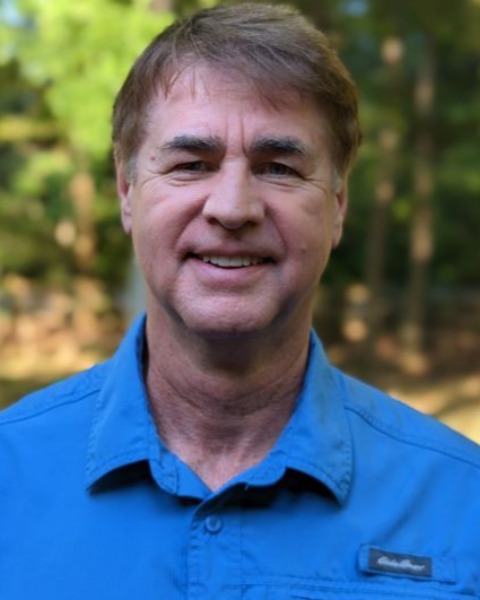Back
One (1) Hour Case Study
Stormwater Management
Stormwater Infiltration – Reversing Urban Hydrology
Wednesday, February 26, 2025
2:55 PM – 3:55 PM ET
Location: E10C
CE: 1 PDH
Level of Presentation: Intermediate

Chris Estes, Professional Landscape Architect and General Contractor
President
Estes Design Inc
Charlotte, North Carolina, United States
Presenter(s)
In anticipation of more extreme and erratic weather events in the future, the practice of stormwater infiltration has become a core principle of municipal stormwater management around the country. This presentation endeavors to explain how and why stormwater infiltration is the essential first step to reverse negative impacts of urban hydrology. Using field research and monitoring of constructed projects along with academic studies, the key processes in design and construction of infiltration practices will be explained.
Full Abstract: Infiltration of rain events is a basic ecological process that has provided our communities with clean reliable water resources since the beginning of human settlement. The practice of stormwater infiltration in the U.S began nearly a century ago. Since the 1930’s monitoring of these practices have documented beyond question it’s contribution to valuable potable ground water supplies to settlements across the country. Now, we are more broadly recognizing ecological processes or “nature-based solutions” as services intrinsic to our quality of life. It is now incumbent on designers more than ever to investigate opportunities where these ecological services can be incorporated into human settlement to the maximum extent practicable.
With tree canopy and vegetation loss being the most salient change in the developed landscape, it is infiltration that must be the first and foremost goal of project planning. The obvious and most effective means is to address the impervious pavements themselves. Producing up to 10 times more runoff than a forest, rethinking pavement’s role in urban stormwater is the crux of urban watershed health.
Porous pavement design & construction requires a unique awareness of the on-site soils for proper design an construction sequencing. Construction sequencing is paramount to the success of infiltration practices including porous pavement. In the Eastern part of the U.S., from Alabama to Maryland, the Piedmont soils are dominated by sandy clays that have ideal infiltration characteristics, as long as they are not compacted. Even compaction of the slightest amount can reduce infiltration rates.
Other than an acute awareness of the soil condition, an understanding of the nuances of different pavement types, such as flexible pavement vs rigid pavement. Flexible pavements such as concrete pavers can move over time, both vertically and horizontally but are simple to replace or to repair isolated areas. While rigid pavement such as pervious concrete spreads loads over a larger area allowing for a shallower pavement profile.
Here, we present field and academic research with constructed case studies and monitoring results of functioning projects to demonstrate practical design and construction methods for long-term function. We also present theoretical research that demonstrates potential of infiltration practices on the watershed level.
Full Abstract: Infiltration of rain events is a basic ecological process that has provided our communities with clean reliable water resources since the beginning of human settlement. The practice of stormwater infiltration in the U.S began nearly a century ago. Since the 1930’s monitoring of these practices have documented beyond question it’s contribution to valuable potable ground water supplies to settlements across the country. Now, we are more broadly recognizing ecological processes or “nature-based solutions” as services intrinsic to our quality of life. It is now incumbent on designers more than ever to investigate opportunities where these ecological services can be incorporated into human settlement to the maximum extent practicable.
With tree canopy and vegetation loss being the most salient change in the developed landscape, it is infiltration that must be the first and foremost goal of project planning. The obvious and most effective means is to address the impervious pavements themselves. Producing up to 10 times more runoff than a forest, rethinking pavement’s role in urban stormwater is the crux of urban watershed health.
Porous pavement design & construction requires a unique awareness of the on-site soils for proper design an construction sequencing. Construction sequencing is paramount to the success of infiltration practices including porous pavement. In the Eastern part of the U.S., from Alabama to Maryland, the Piedmont soils are dominated by sandy clays that have ideal infiltration characteristics, as long as they are not compacted. Even compaction of the slightest amount can reduce infiltration rates.
Other than an acute awareness of the soil condition, an understanding of the nuances of different pavement types, such as flexible pavement vs rigid pavement. Flexible pavements such as concrete pavers can move over time, both vertically and horizontally but are simple to replace or to repair isolated areas. While rigid pavement such as pervious concrete spreads loads over a larger area allowing for a shallower pavement profile.
Here, we present field and academic research with constructed case studies and monitoring results of functioning projects to demonstrate practical design and construction methods for long-term function. We also present theoretical research that demonstrates potential of infiltration practices on the watershed level.
Learning Objectives:
At the conclusion of this presentation, attendees will:
- After seeing this presentation the attendee will understand key site parameters that dictate stormwater infiltration effectiveness
- After seeing this presentation the attendee will understand typical infiltration rates of sandy clay soils of the southeast and variation in testing results vs monitored results.
- After seeing this presentation the attendee will understand the key components to planning, designing and constructing a stormwater infiltration solution.

.jpg)
